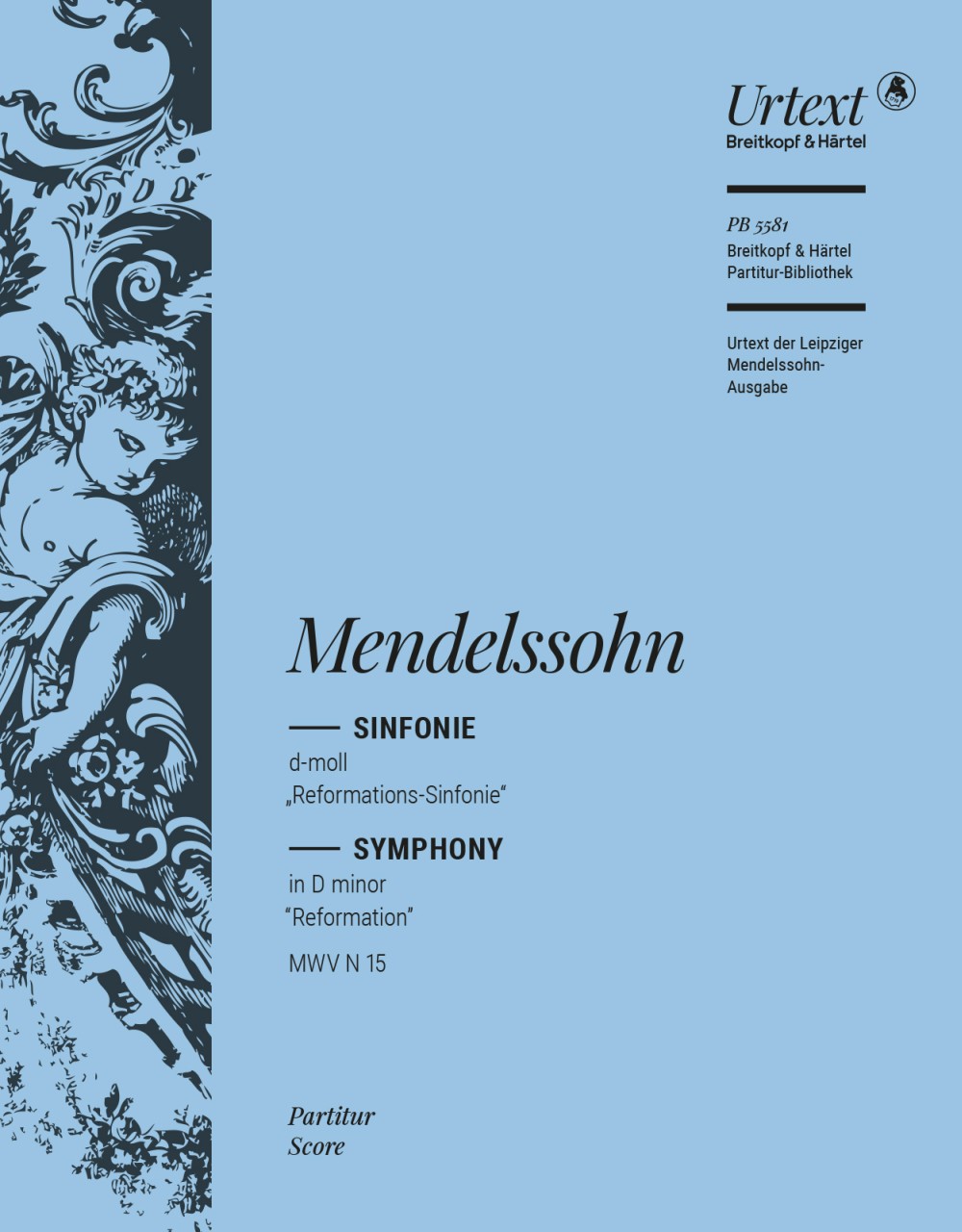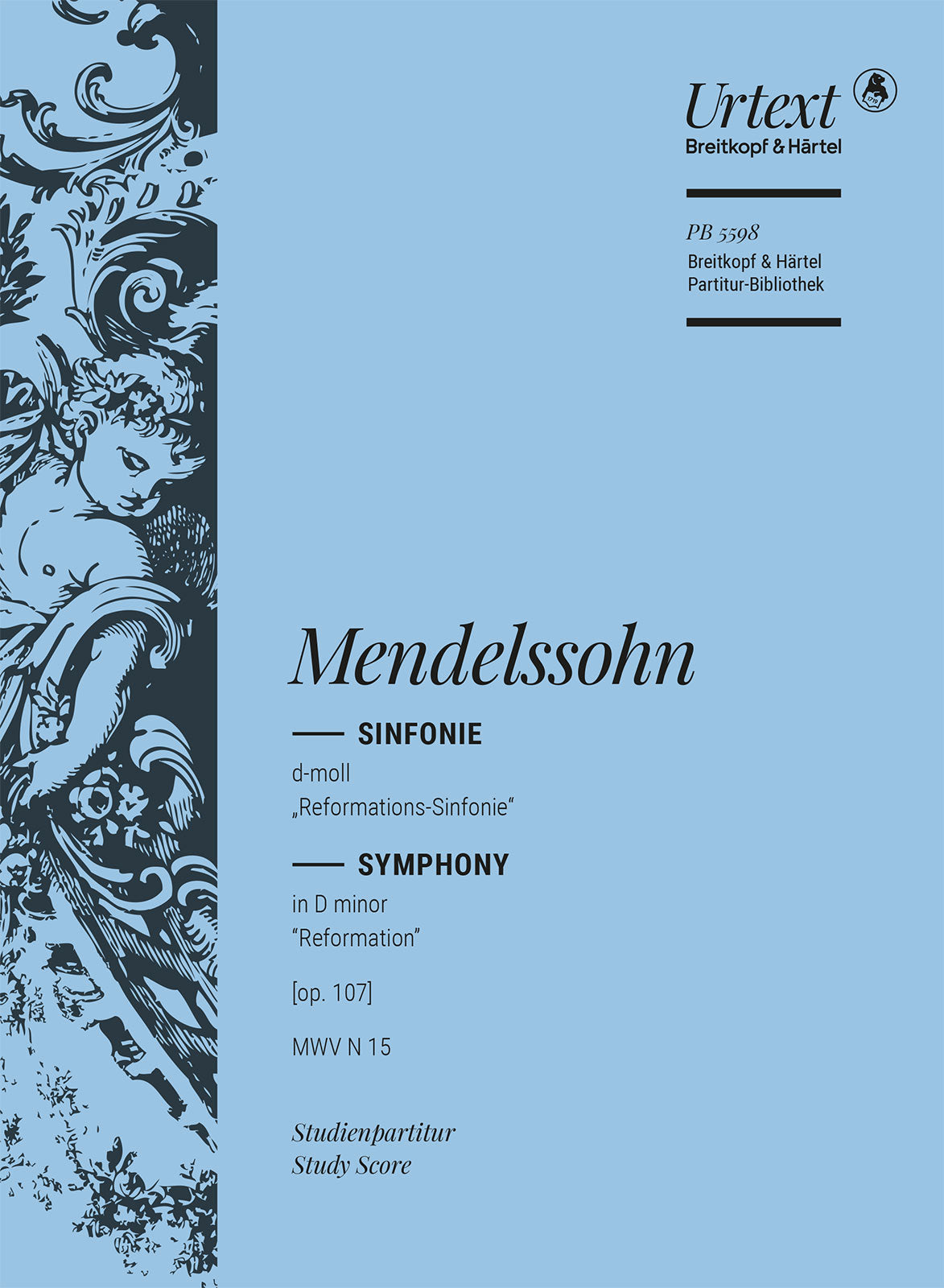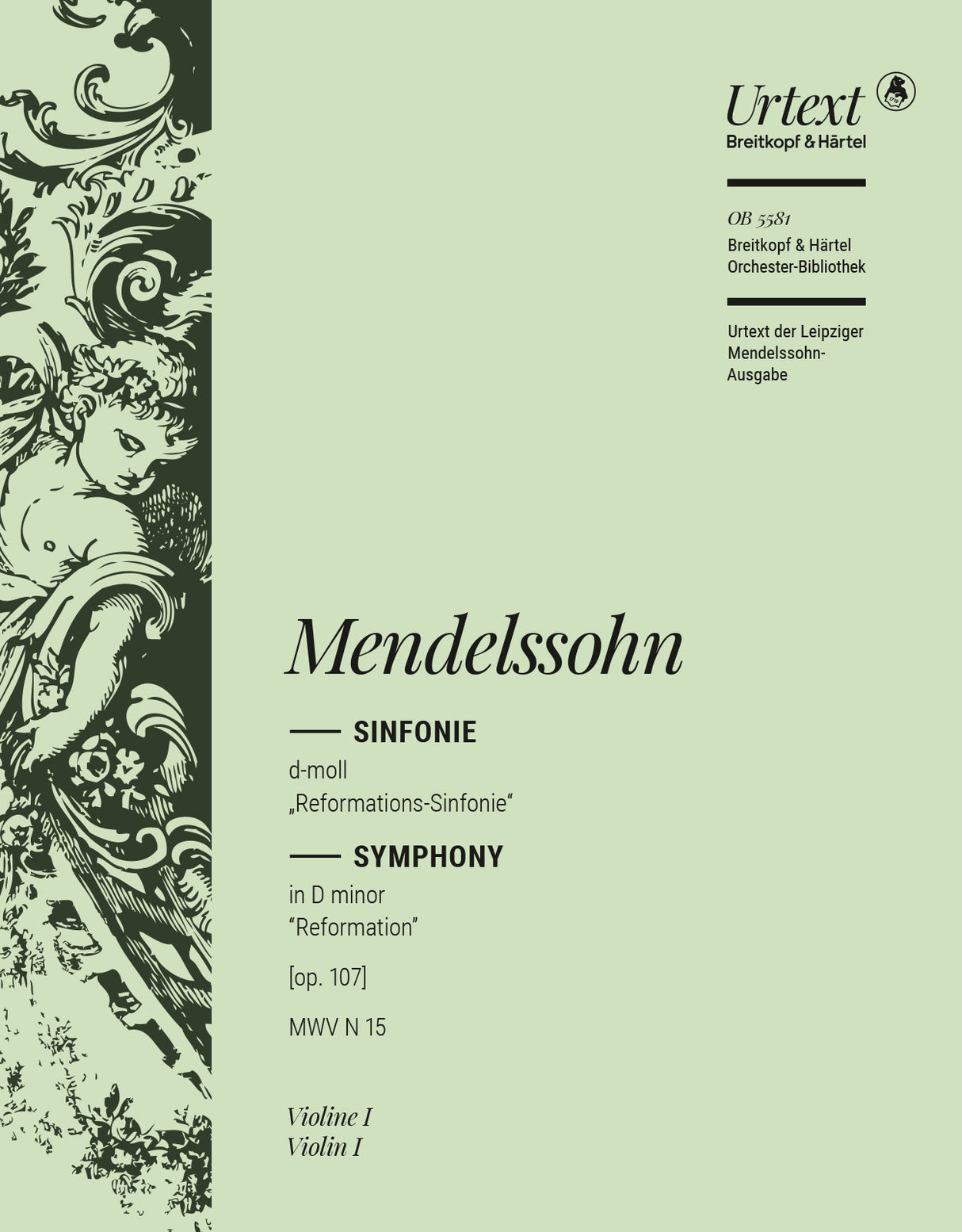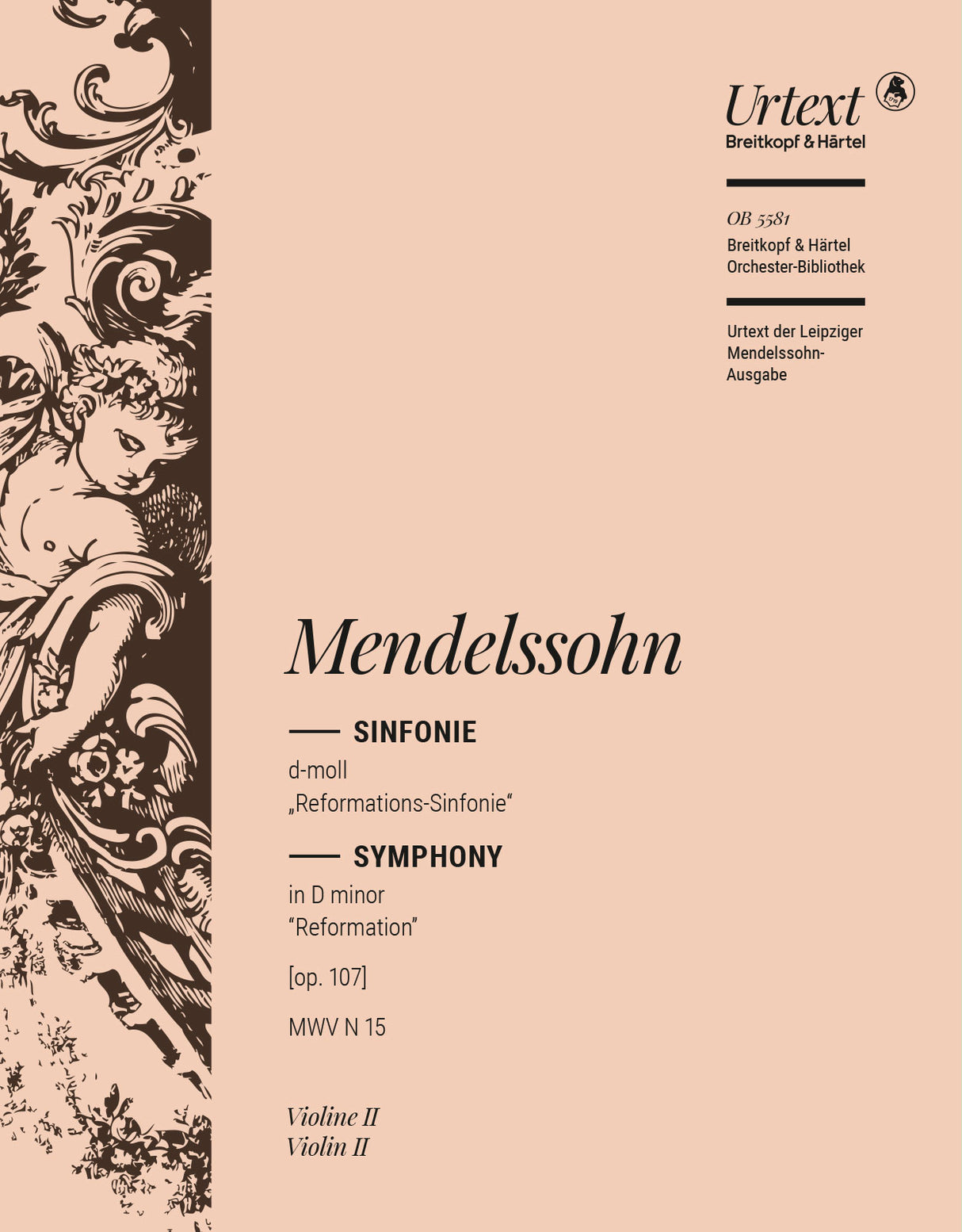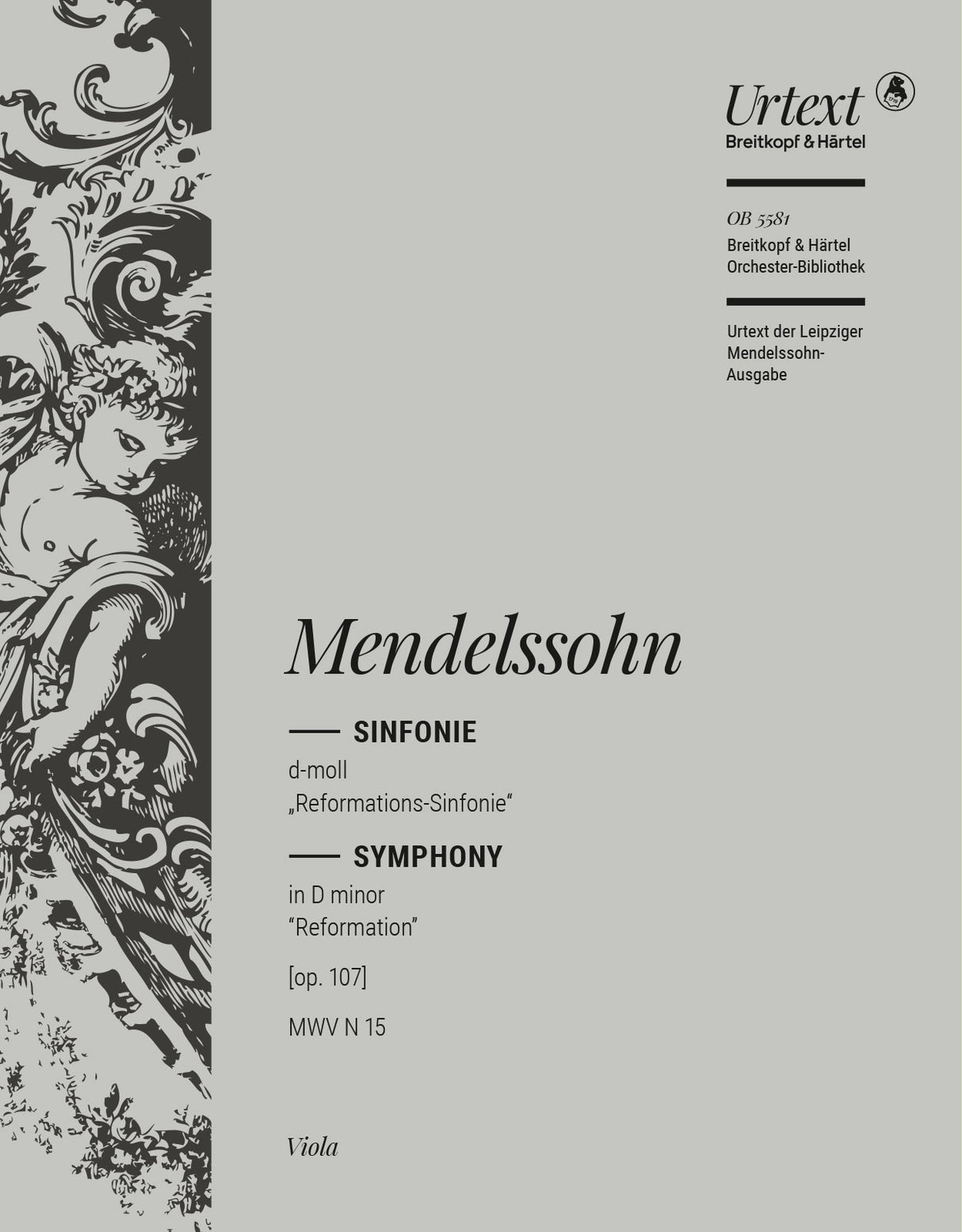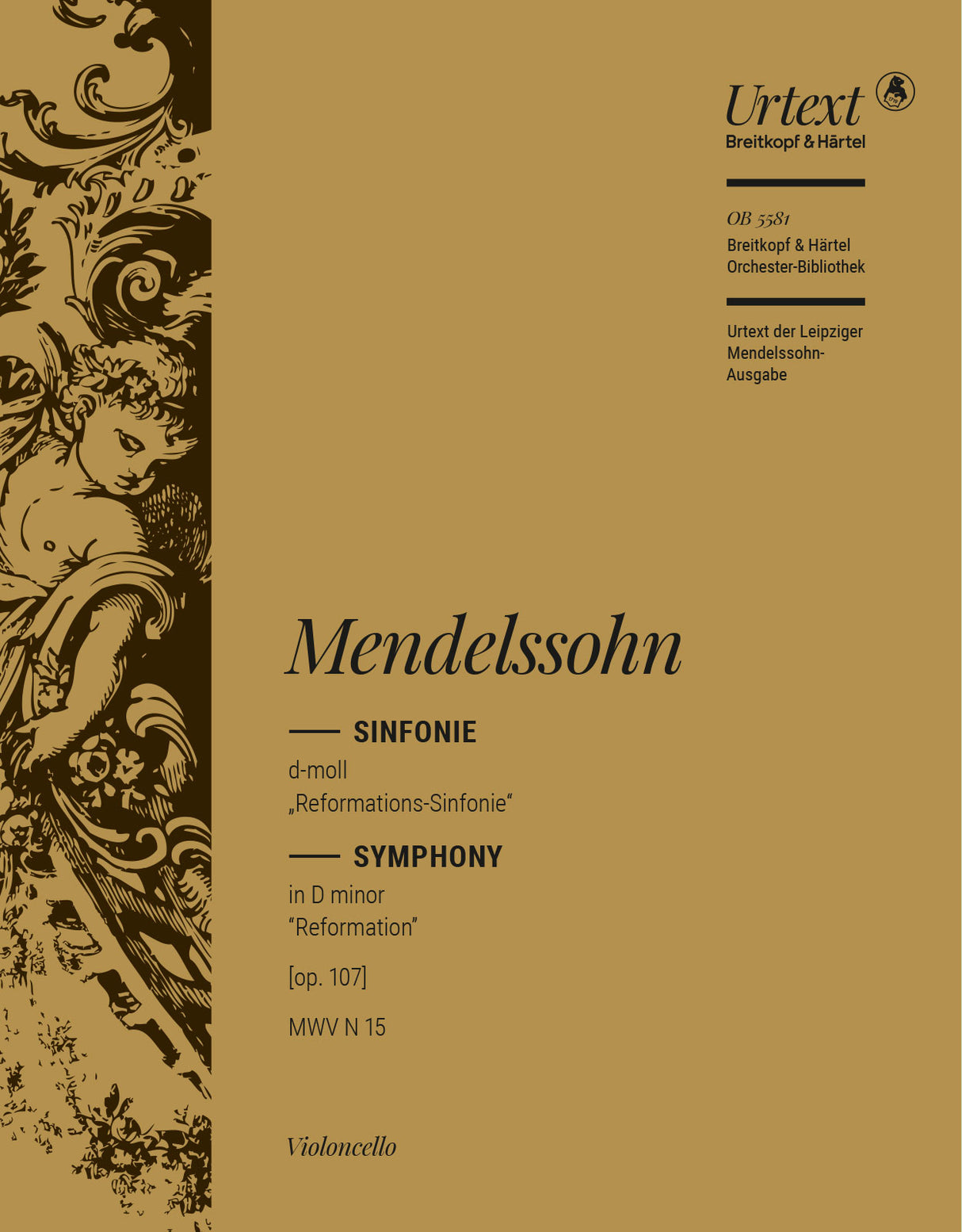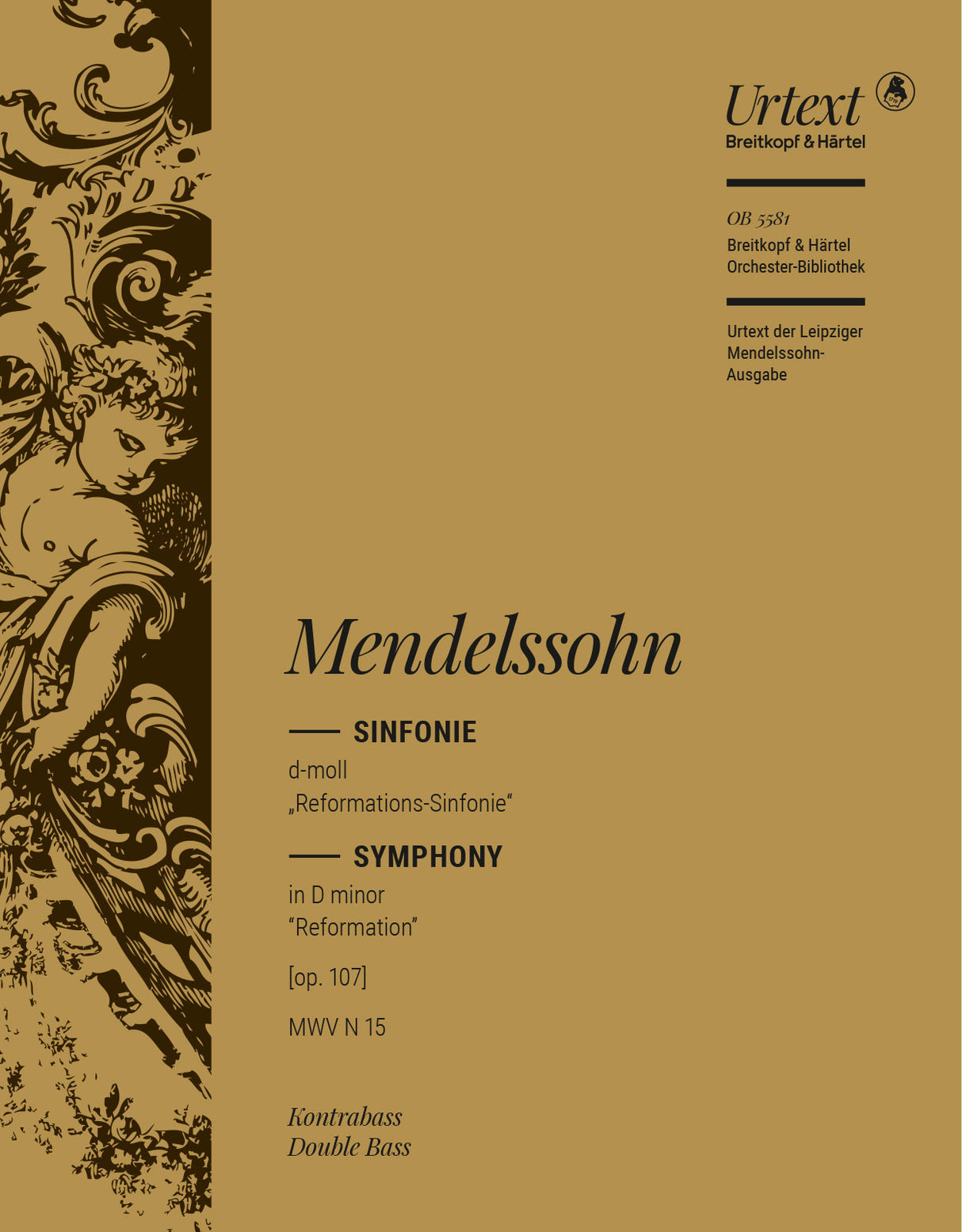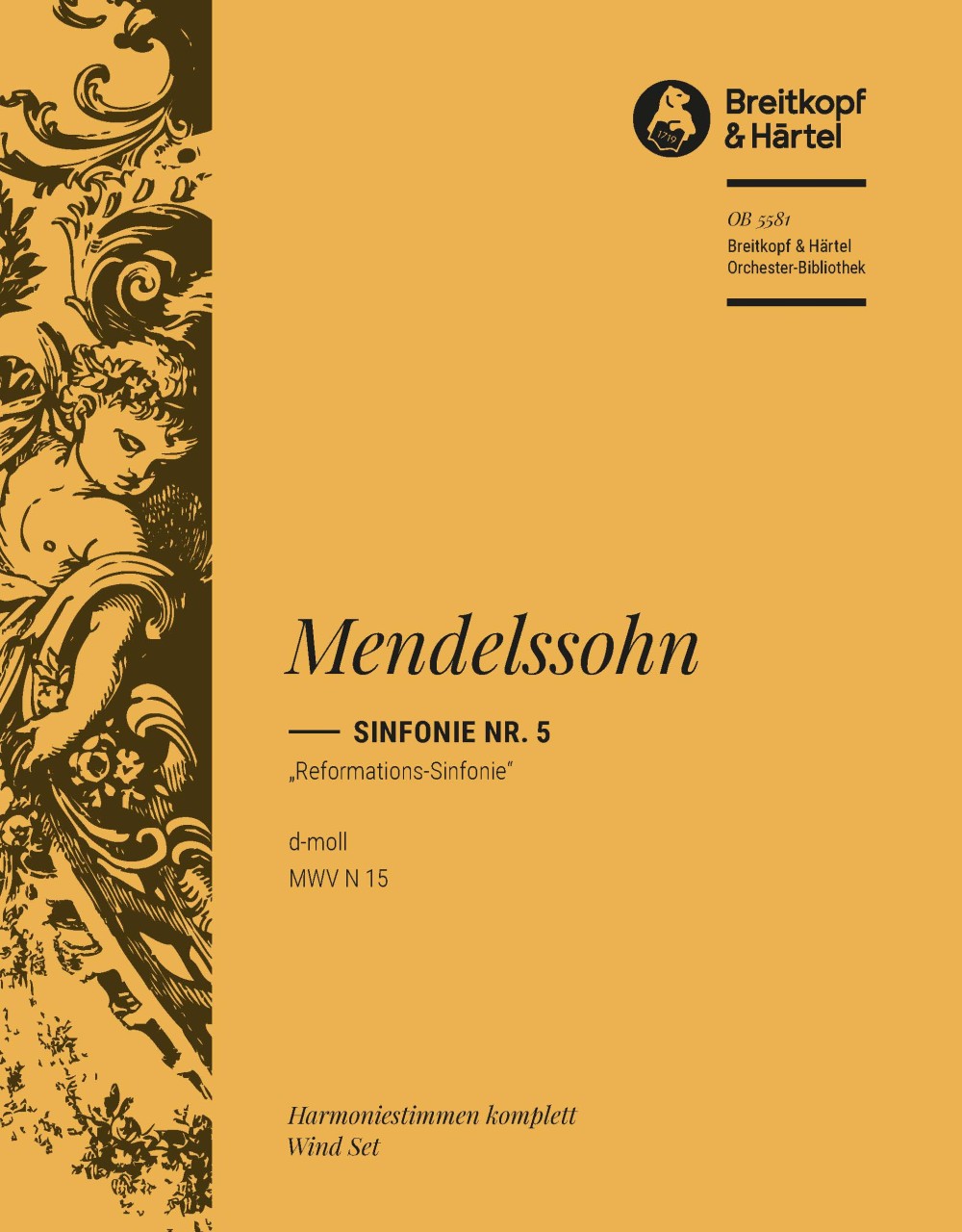Mendelssohn: Symphony No. 5 in D Minor, MWV N 15, Op. 107
"Reformation Symphony"
In stock and typically ships within 1 business day.
- Composer: Felix Mendelssohn (1809-1847)
- Instrumentation: Orchestra
- Work: Symphony No. 5 in D Minor ("Reformation Symphony"), MWV N 15, Op. 107
- ISMN:
- Size: 9.8 x 12.6 inches
- Pages: 140
- Urtext / Critical Edition
Description
Felix Mendelssohn Bartholdy composed his Reformation Symphony for the celebrations marking the 300th anniversary of the "Confessio Augustana," the Protestant declaration of faith. Owing to various and only partially explained reasons, there was no performance in 1830, the year in question; it was only two years later that the composer conducted the premiere of his work, now heavily revised, in Berlin. There was only one more performance in Mendelssohn's lifetime, this one conducted by Julius Rietz in Düsseldorf; the composer had since distanced himself from his opus.
Conceived for the concert hall, the symphony formulates its theological references through the integration of various motives. This occurs in the finale, for example, in which Mendelssohn quotes the Luther chorale "Ein feste Burg" in the flute, from where it builds up to a triumphant principal theme. The strong extra-musical aspect must have been one of the reasons for the composer's later avoidance of this score, especially since Mendelssohn was becoming increasingly skeptical about explicitly programmatic music in the instrumental domain. The "Reformation Symphony" is being published in Breitkopf Urtext as a preprint of the Complete Edition. Next to the Düsseldorf performance material of 1837, two scribal copies have been examined for the first time; they transmit the main stages of the version of 1830.
Publishers use a lot of words to describe what they sell, and we know it can be confusing. We've tried to be as clear as possible to make sure you get exactly what you are looking for. Below are descriptions of the terms that we use to describe the various formats that music often comes in.
Choral Score
A score for vocalists that only contains the vocal lines. The instrumental parts are not there for reference. Generally, cheaper than a vocal score and requires multiple copies for purchase.
Facsimile
Reproductions of the original hand-written scores from the composer.
Full Score
For ensemble music, this indicates that the edition contains all parts on a single system (there are not separate parts for each player). In larger ensembles, this is for the conductor.
Hardcover
Hardbound. Generally either linen-covered or half-leather.
Orchestral Parts
Similar to a wind set, this is a collection of parts. In the case of strings, the numbers listed are the number of copies included, though generally these are available individually (often with minimum quantities required).
Paperback
When publishers offer multiple bindings (e.g. hardcover) or study scores, this is the "standard" version. If you're planning to play the music, this is probably what you want.
Performance / Playing Score
A score of the music containing all parts on one system, intended for players to share. There are not separate parts for each player.
Set of Parts
For ensemble music, this indicates that there are separate individual parts for each player.
Solo Part with Piano Reduction
For solo pieces with orchestra, this is a version that contains a piano reduction of the orchestra parts. For piano pieces, two copies are typically needed for performance.
Study Score
A small (think choral size) copy of the complete score meant for studying, and not playing. They make great add-ons when learning concertos and small chamber works.
Vocal Score
A score prepared for vocalists that includes the piano/organ part or a reduction of the instrumental parts.
Wind Set
For orchestral music, this is a collection of wind and percussion parts. The specific quantities of each instrument are notated.
With Audio
In addition to the printed music, the edition contains recordings of the pieces. This may be an included CD, or access to files on the internet.
With / Without Fingering (Markings)
Some publishers prepare two copies - a pure Urtext edition that includes no fingering (or bowing) suggestions and a lightly edited version that includes a minimal number of editorial markings.

